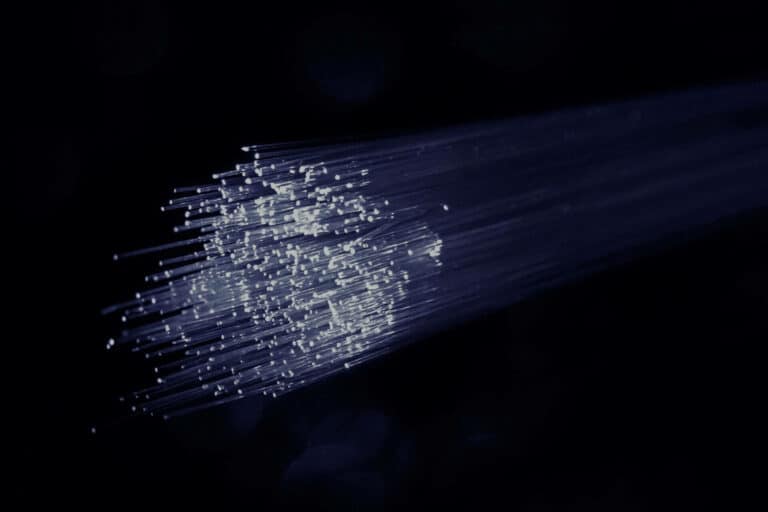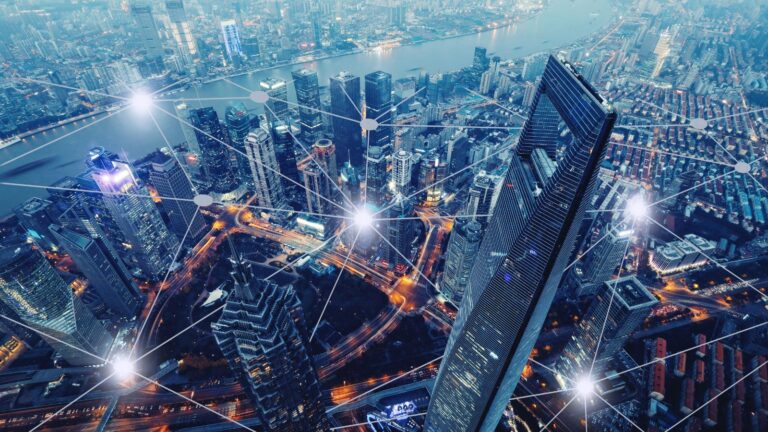
ASTRID network
Thanks to ASTRID, the emergency services can be reached anywhere. We will go into this in more detail.

Fiber optic Internet, also called “fiber” or “fiber optics,” offers broadband connections with speeds of up to more than 940 megabits per second (Mbps) and very low ping.
This modern technology uses fiber optic cables, which allow unprecedented speeds over a cable.
Fiber optic cables consist of thin, flexible glass wires that transmit signals with light particles.
Yes, you read correctly, light particles!
Thanks to this technology, we now achieve speeds of up to 70% of the speed of light.
You no longer have to wait all night for your game to download, and movies hardly buffer anymore.
The future is here, and it’s coming to you via fiber cable.
To understand this, we first need to know what the different connection methods entail:
DSL, or Digital Subscriber Line, is Internet through your telephone line.
It uses existing telephone cables to transmit Internet data as well.
To this day, Proximus still offers Internet services over these lines.
There are two main types of DSL connections: symmetrical and asymmetrical.
A symmetrical connection offers equal upload and download speeds, while an asymmetrical connection has faster download speeds and slower upload speeds.
DSL provides a constant but not always strong Internet connection.
The connection is direct to the nearest neighborhood exchange, which means your Internet is not shared with other users on the same cable.
The strength of your Internet connection can be affected by several factors.
The farther you are from the neighborhood exchange, the slower your speed may be.
The number of simultaneous users can also affect it.
For example, if you watch TV over the same connection, that can slow your Internet speed because the bandwidth is shared.
DSL can offer download speeds from 1 to 400 Mbps and upload speeds range from 384 Kbps to 8 Mbps.
Note that the speed you actually experience depends on your distance from the neighborhood exchange and the simultaneous use of your Internet connection.
Cable Internet uses a coaxial cable to bring the Internet to your home.
Telenet is a well-known example of a provider that offers cable Internet.
Compared to DSL Internet, cable Internet has its own advantages and disadvantages.
One advantage is that distance to the street cabinet and bandwidth do not affect your surfing speed.
On the other hand, the speed can be affected by your neighbors’ use because cable Internet works over a shared network.
So during busy times, your speed can drop significantly.
Telenet, for example, offers several subscriptions that allow you to limit your speed during peak hours to relieve the network.
The download speed of cable Internet typically ranges from 25 Mbps to 1 Gbps, although in practice you often end up slightly lower because of the shared network.
Upload speeds range between 5 and 50 Mbps.
Fiber Internet offers speeds of up to 1 Gbps and is extremely reliable.
It is not affected by other users, and cable distances are not a factor.
The cables are also resistant to problems such as moisture.
This means you can always count on a stable and fast connection.
No more stammering video calls or movies that suddenly start buffering!
Want to know how fast your Internet is? Test it yourself on the Ookla website!
Whether you can use fiber depends on where you live and which Internet service provider you are affiliated with.
Proximus was one of the first to build out their own fiber optic network.
They currently operate mainly in major cities, but are expanding to new areas daily.
You can check on their website to see if fiber is available at your home.
Telenet doesn’t have a full fiber network yet.
They still use coaxial cables up to your home, but the connection from Telenet to the distribution room is already fiber.
Telenet offers a hybrid network, with both fiber and coaxial cables.
This provides stable download speeds of up to 500 Mbps, but your speed may vary depending on the number of users on the same distribution station.
Fluvius also has a fiber optic network in Belgium.
Lesser-known providers and also Orange use it.
Orange is still working on pilot projects and therefore has limited coverage at the moment.
On Orange’s website you can see in which cities fiber is available.
On Sept. 22, 2021, the available cities are Genk, Ghent, Diksmuide, Poperinge and Antwerp.
Only in Antwerp can you currently apply for a free fiber connection.
What does fiber cost?
The cost of fiber is best compared to your current Internet plan.
You don’t have to pay excessive amounts to enjoy fiber.
Note that there may be additional costs for installing the fiber connection in your home.
With Orange, for example, this can be around 500 euros.
Absolutely!
Fiberglass offers unparalleled stability and speed.
It is only a matter of time before fiber optics becomes the standard.
By then, it will seem strange if you are still surfing via DSL or coaxial cable.

Thanks to ASTRID, the emergency services can be reached anywhere. We will go into this in more detail.

Some materials should be used as little as possible when constructing a new building.

Upgrade to 4G and 5G for faster, more secure business connectivity. Reliable, scalable, and future-proof—discover Mercuron’s solutions today!

Mercuron, a Belgian company, specializes in wireless communication. With our expertise in radio waves, we create ASTRID and mobile phone signal amplifiers from the ground up.